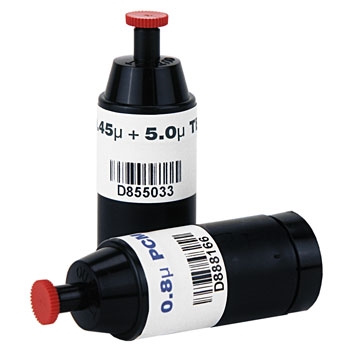Your Guide to Effective Asbestos Testing Procedures
Asbestos testing procedures are a critical part of making certain the security of interior settings, specifically in older buildings where this unsafe material might exist. The possible health risks connected with asbestos exposure make it imperative to approach screening with accuracy and thoroughness. From recognizing the buildings of asbestos to efficiently interpreting examination results, a detailed overview can outfit people with the knowledge and devices needed to navigate this intricate process. Keep tuned to uncover the crucial steps and factors to consider that can help you secure against the risks presented by asbestos.
Comprehending Asbestos and Its Threats
Asbestos, a normally happening mineral understood for its heat resistance and resilience, positions extreme wellness threats when its fibers are inhaled or consumed. asbestos testing cost. Direct exposure to asbestos can bring about major wellness problems such as lung mesothelioma cancer, asbestosis, and cancer cells. Despite its advantageous residential properties, asbestos has been commonly prohibited in many countries as a result of the proven link in between asbestos direct exposure and these lethal conditions
When asbestos-containing materials are disrupted or damaged,The danger lies in the tiny fibers that can easily end up being air-borne. Once inhaled, these fibers can end up being lodged in the lungs, creating inflammation and scarring in time. The latency duration between direct exposure to asbestos and the development of relevant illness can span several decades, making early detection and prevention crucial.
Asbestos was typically used in building materials, insulation, and vehicle parts before its health threats were fully understood. Today, proper testing and removal of asbestos-containing products are necessary to protect people from the threats connected with asbestos exposure.
Identifying Possible Asbestos Materials
The identification of prospective asbestos products is an essential action in guaranteeing the safety of people subjected to harmful materials in different environments. Asbestos can be found in a vast array of structure materials, consisting of however not limited to insulation, ceiling floor tiles, floor ceramic tiles, concrete sheets, and roofing roof shingles - testing asbestos near me. Identifying these materials properly is necessary to properly handling the dangers connected with asbestos direct exposure

In instances where aesthetic assessment is inconclusive, examples of thought products can be gathered and sent to accredited labs for testing. These research laboratories employ specialized methods such as polarized light microscopy or transmission electron microscopy to precisely establish the presence of asbestos fibers in the samples. By complying with extensive recognition treatments, individuals can properly mitigate the risks associated with asbestos exposure.
Choosing the Right Screening Approach
Identification of possible asbestos products plays an essential duty in figuring out the ideal screening method for exact asbestos fiber detection. As soon as presumed products have been identified, picking the ideal screening method is necessary to guarantee dependable outcomes. There are 2 main techniques for asbestos screening: polarized light microscopy (PLM) and transmission electron microscopy (TEM) PLM is frequently utilized for first testing as it is cost-efficient and supplies fast results. Nonetheless, PLM has restrictions in spotting asbestos fibers that are smaller than 1 to 3 microns. On the various other hand, TEM is an extra innovative strategy that can accurately identify asbestos fibers at the ultrastructural level. While TEM is much more taxing and pricey than PLM, it supplies higher sensitivity and uniqueness in asbestos discovery. Picking the proper screening approach depends upon different elements such as the sort of material being examined, the needed level of sensitivity of the evaluation, and the readily available budget. It is critical to speak with certified asbestos screening specialists to establish the most ideal approach for your particular testing demands.
Performing Example Collection Securely
When accumulating samples for asbestos testing, focusing on safety procedures is vital to minimize prospective direct exposure threats. Asbestos fibers are hazardous when interrupted, making it vital to adhere to correct safety methods throughout sample collection - asbestos testing service. Before beginning the sampling procedure, make certain that you are furnished with individual safety devices (PPE) such as disposable coveralls, goggles, masks, and gloves to avoid inhalation or call with asbestos fibers
It is important to wet the sampling area utilizing a mild haze of water to stop the fibers from becoming airborne during collection. Use care when gathering samples and prevent aggressive scratching or piercing that could release asbestos fibers right into the air. Rather, carefully cut a little piece of the material using here are the findings suitable devices and put it into a sealed container for analysis by a certified research laboratory.
Additionally, classifying each sample with thorough details concerning the tasting day, collection agency, and area's name is essential for exact record-keeping and evaluation. By read here following these safety guidelines, you can carry out sample collection for asbestos screening successfully while minimizing the danger of direct exposure.
Translating Test Results and Following Actions

Verdict
Finally, reliable asbestos testing procedures are essential in determining and taking care of potential health dangers associated with asbestos direct exposure. resource By comprehending the threats of asbestos, identifying possible products, choosing the right screening method, performing sample collection securely, and analyzing examination results properly, organizations and people can take the required steps to secure themselves and others from the hazardous effects of asbestos. It is vital to prioritize security and appropriate testing protocols to make sure a healthy and balanced setting for all.

Recognition of possible asbestos products plays a vital role in establishing the ideal screening technique for accurate asbestos fiber detection. The examination results will show the presence or absence of asbestos, the type of asbestos fibers present, and the concentration levels.In final thought, efficient asbestos screening treatments are crucial in identifying and managing possible health and wellness risks linked with asbestos exposure. By comprehending the threats of asbestos, recognizing prospective products, picking the appropriate testing technique, carrying out example collection securely, and analyzing examination results precisely, organizations and people can take the essential steps to protect themselves and others from the damaging impacts of asbestos.